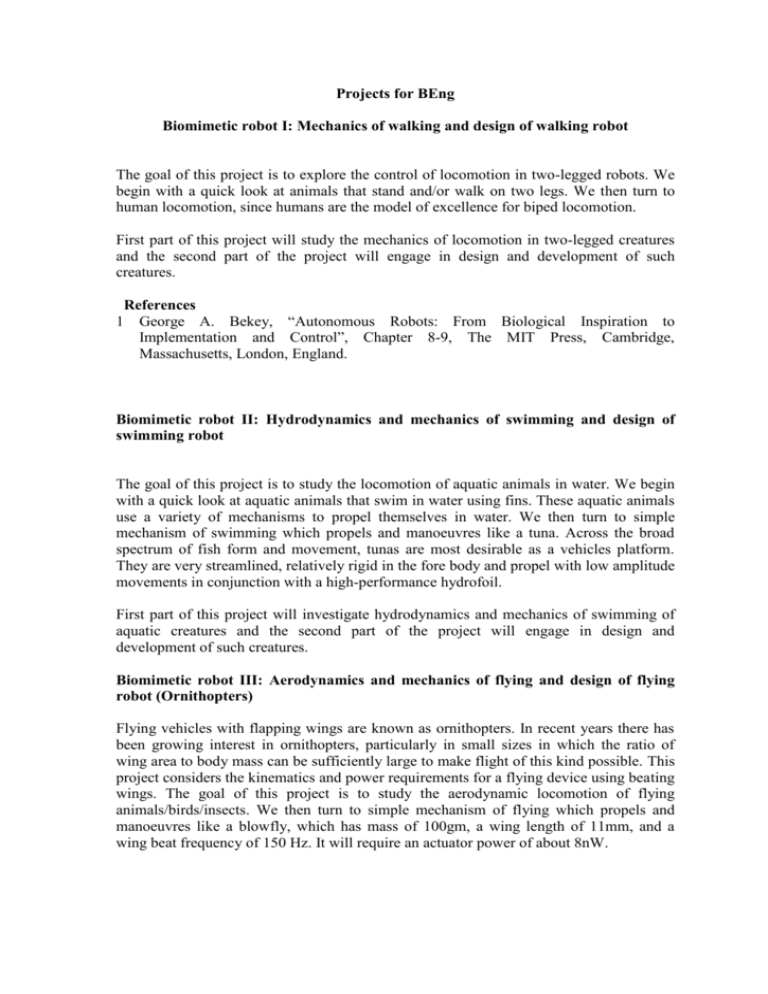info
advertisement

Projects for BEng Biomimetic robot I: Mechanics of walking and design of walking robot The goal of this project is to explore the control of locomotion in two-legged robots. We begin with a quick look at animals that stand and/or walk on two legs. We then turn to human locomotion, since humans are the model of excellence for biped locomotion. First part of this project will study the mechanics of locomotion in two-legged creatures and the second part of the project will engage in design and development of such creatures. References 1 George A. Bekey, “Autonomous Robots: From Biological Inspiration to Implementation and Control”, Chapter 8-9, The MIT Press, Cambridge, Massachusetts, London, England. Biomimetic robot II: Hydrodynamics and mechanics of swimming and design of swimming robot The goal of this project is to study the locomotion of aquatic animals in water. We begin with a quick look at aquatic animals that swim in water using fins. These aquatic animals use a variety of mechanisms to propel themselves in water. We then turn to simple mechanism of swimming which propels and manoeuvres like a tuna. Across the broad spectrum of fish form and movement, tunas are most desirable as a vehicles platform. They are very streamlined, relatively rigid in the fore body and propel with low amplitude movements in conjunction with a high-performance hydrofoil. First part of this project will investigate hydrodynamics and mechanics of swimming of aquatic creatures and the second part of the project will engage in design and development of such creatures. Biomimetic robot III: Aerodynamics and mechanics of flying and design of flying robot (Ornithopters) Flying vehicles with flapping wings are known as ornithopters. In recent years there has been growing interest in ornithopters, particularly in small sizes in which the ratio of wing area to body mass can be sufficiently large to make flight of this kind possible. This project considers the kinematics and power requirements for a flying device using beating wings. The goal of this project is to study the aerodynamic locomotion of flying animals/birds/insects. We then turn to simple mechanism of flying which propels and manoeuvres like a blowfly, which has mass of 100gm, a wing length of 11mm, and a wing beat frequency of 150 Hz. It will require an actuator power of about 8nW. First part of this project will investigate aerodynamics and mechanics of flying creatures and the second part of the project will engage in design and development of such creatures. Reference 1. R.S. Fearing, S. Avadhanula, D. Campolo, M. Sitti, J. Yan and R. Wood, “A Micromechanical Flying Insect Thorax”, in Neurotechnology for Biomimetic Robots edt J. Ayers, J. L. davis and A. Rudolph, The MIT Press, Cambridge, Massachusetts. Biomimetic robot IV: Mechanics of Serpentine (snake) gaits and design of serpentine robot.





